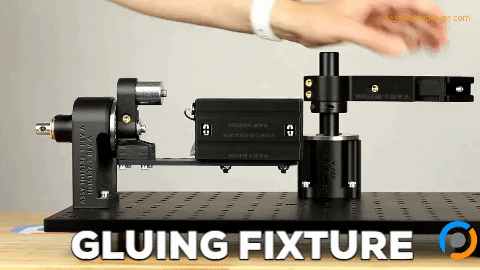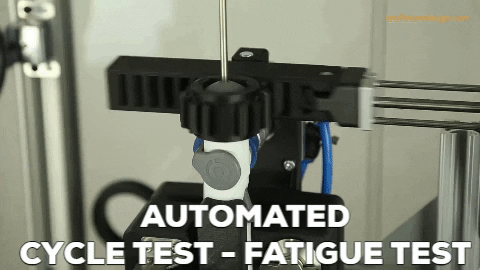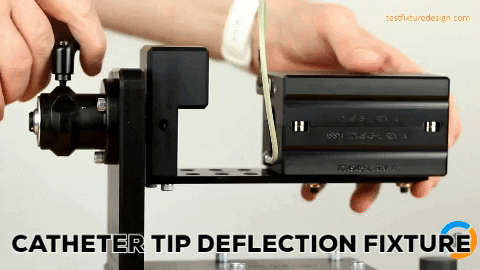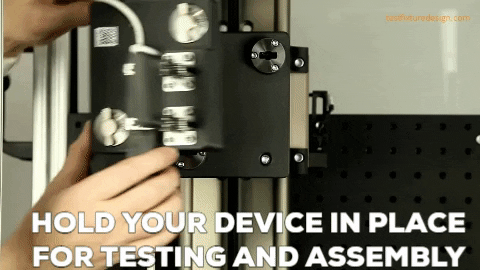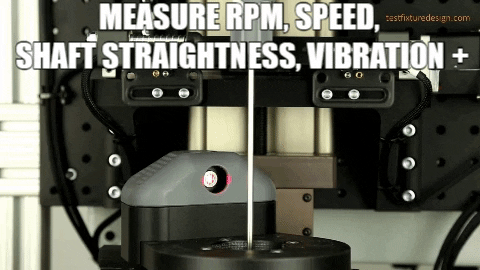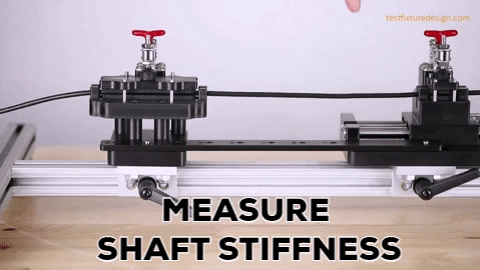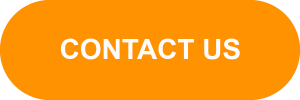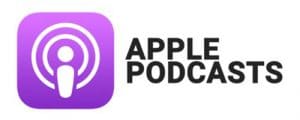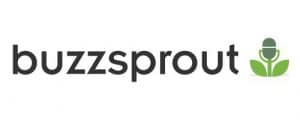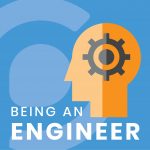Rob Donley | Kaizen, Communication, & the Design Squiggle
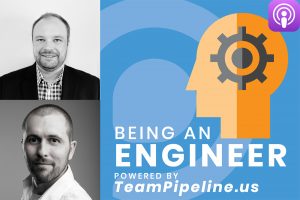
Who is Rob Donley?
Rob Donley has a deep understanding of how engineering works. Kicking off his engineering career from a young age building RC cars and model rockets, he has provided design and leadership capabilities for many companies over the years, and brings to the table not just the ability to design something, but to understand the many facets that accompany development of a new product such as manufacturing, supply chain, financial strategy, and project management.
EXPAND TO VIEW EPISODE TRANSCRIPTION
SUMMARY KEYWORDS
problem, kaizen, people, building, design, mines, engineering, manufacturing, test, developing, process, terms, enzyme, legos, product, engineering teams, assembly, engineer, company, idea
SPEAKERS
Aaron Moncur, Rob Donley
Aaron Moncur 00:14
Welcome to the being an engineer podcast. Our guest today is Rob Donley. Rob is an engineer with an emphasis on developing mechanical and electrical systems, products and equipment, and has deep experience analyzing the commercial side of engineering as well as mentoring and developing engineering teams, leadership, project strategy, supply chain development and project management. Rob, thank you so much for being with us. And welcome to the show.
Rob Donley 00:43
Thank you for having me.
Aaron Moncur 00:45
All right. So what made you decide to become an engineer? Rob?
Rob Donley 00:51
Honestly, it’s probably an answer that you get, more often than not, it all began with Legos really? Yeah, you begin building things and you learn the process of, of iterating. And then coming up with your own designs and making improvements on what you saw, testing those improvements, and then trying them out. So I would say all of us that started building Legos are very well versed in that entire process.
Aaron Moncur 01:18
Absolutely. So okay, you started building Legos, I’m assuming as a kid, you know, 568 years old, whatever. And what was it about that, that process that, that you liked so much that, you know, eventually you thought to yourself, Okay, I’m going to take Legos to the next level, and, you know, start building actual products by being an engineer,
Rob Donley 01:39
you know, I think the progression is you start building, you know, it’s very, like a pixelated experience in the beginning, you don’t really have the techniques, blocks, where you can explore a rotary motion yet, you can only build in the XY and Z dimension linearly. And so you understand that there are a lot of design constraints that you’re presented with, with regard to problems that you want to solve. If you can only do you know, those if you can only work in those three dimensions. So after that, when you get into you know, the the rotary stuff that was included in the techniques, X and techniques, and motion power. You, it just all builds on itself. So after that, you know, it becomes remote control cars, and then doing the same thing, iterative design process, how can I take what the problem that someone tried to do, and solve it in a better way, either for higher performance or in a simpler way, which is often the often often the best design mantra there is. So building on that, that’s why I went to engineering school,
Aaron Moncur 02:46
what were some of the iterative platforms that you use to between Legos and college?
Rob Donley 02:54
Jeez, it probably for me, it probably came down to RC cars. So I was I was very involved with gas and electric, RC cars, and changing the radio systems out in them to see if I could increase range, adding channels so that, you know, the car or an airplane could perform new functions. And then changing things like, you know, in one instance, I’ve just about doubled the power of one of my remote control cars as a side project for fun. And the lucky part were, for me was that I had parents that supported that development, they considered it, you know, my tinkering as part of my formal education before I got to school. So as you know, I went into engineering school with a very practical background.
Aaron Moncur 03:40
That’s fantastic. I love hearing that your parents supported that I have a few children of my own, and at least one of them is definitely interested in engineering. So I try and foster that wherever I see the opportunity. What were some of the things that your parents did that helped you feel supported in developing that skill set?
Rob Donley 04:03
I think a major a major one for me was I guess another hobby that I had in model rockets and so when when you when you start building model rockets as a kid you’re generally looking at the Estes sets that are for sale in a hobby shop are now probably bought on Amazon. And you understand, you know, after building a few of them how they were trying to solve the same problem over and over again, and my dad got involved with one with me where we talked about the eye ideal way to make high strength glue joints and taking a look at how to make very strong rocket bodies. And you know that that started a discussion. I mean, I was probably 10 years old at the time about why wrapping paper two has twisted and a helix like it is out of a piece of paper and it makes it a very strong object. And so you know, after that conversation with my dad about Why glue works and what are the weaknesses and strengths of glue. We built a rocket of our own without a kit. And it was great, it had a great flight pattern good maximum height was very strong. My mom probably tossed it when I was, you know, in high school, but I it was it was then that I learned that there is always a better way to do something. And that I think is has kept his kept my passion going. And especially once I started connecting this kind of design thinking to medical devices, which is the main industry that I operate in, there is always a better way to push a medical device design forward or to or to further the industry as a whole in the state of the art. So
Aaron Moncur 05:47
how cool what a great experience was your dad, also an engineer,
Rob Donley 05:52
he was he was a petroleum refining engineer and chemical engineer, went to the same school I did went to mines. And you know, kind of always had that Nick, you know, had the knack tinkering mindset. So I think he was excited to see that in me, although I was into probably different things that he was. But the important part about my development was that he was interested in what I was interested in and showed me better ways to do it. And that sort of started the gears turning.
Aaron Moncur 06:20
That’s that’s a huge deal. I consider you very fortunate to have had a father who was interested in the same things because speaking as a father, it can be tough to be interested in the things that your kids are interested in. I can only hear so much about Minecraft and building in Minecraft and the video games that they’re into. Let’s talk about the School of Mines where you graduated, you just mentioned that your dad went there as well, which is cool, you’ve got kind of a legacy now at that school. I had a friend quite a while ago who also went to the Colorado School of Mines. And he was so excited about attending this school. Tell us what’s different about the School of Mines from other universities out there.
Rob Donley 07:08
I think for one, a lot of the professor’s come from industry. So they have a practical knowledge that connects with theory that you read in books that I didn’t see elsewhere to the same degree. You know, to be fair, I think some of the other Colorado universities have fantastic engineering programs, CSU at CU, in particular, just really strong stuff. But, you know, for me, mine smaller school, you know, more attentive in terms of the student to faculty ratio, when I was there, at least in the specialized classes, you know, you’re gonna be in a room with 100 people for calculus, no matter where you go. But once you get to, you know, something like super strengths or you know, like a vector mathematics or something, you’re likely going to be in a room of 10 people and the professor generally can, you know, checkup and care about your learning more. So I think school size was important to me, that industry experience was important to me and then minds is generally known for. I know some people would call it minds defying a problem, but breaking a problem down into its parts in terms of the math and understanding the science before evaluating and proposing a solution. So instead of just going into a problem, you know, where there’s a textbook definition for it, one of the things I enjoyed the most was, what if there isn’t an answer for this, I did a lot of work and fuel cells, my senior year at mines in the Colorado fuel cell center under Neil Solomon, and a lot of things we just didn’t know, because the technology was still being developed. And so one thing I liked about the mines experience was trying to quantify what you don’t know in terms of math, and then find out what you want to know that you don’t know, that matters to a problem. And that whole approach was something I found, you know, reiterated all over my mechanical engineering experience of mines.
Aaron Moncur 09:03
I’m getting a sense for the process that was taught at mines as you talk. When I graduated college, certainly I had a foundation, you know, an engineering foundation to build on. But I don’t think it was extraordinarily useful to the first company for which I worked, right. I just didn’t have that much experience and there was a lot of on the job training, graduating from mines. Do you feel like you hit the ground running at your first full time job did was it a better environment in which to learn the the what’s the word? I’m looking for the skills that make you actually useful in an engineering company.
Rob Donley 09:47
I can tell a story about that. You know, when I was in college, I ran a landscaping crew in in Denver and Greenwood Village and I remember the day I was I was at a mansion in Greenwood Village in Denver. digging a new ditch and trying to find a tree root that had climbed over a landscaping sprinkler line. And I got a call from my senior design Professor literally, you know, soaked in sweat, it’s 105 degrees out, and I’m holding a shovel. And he says, hey, you know, I’ve got the president of this company in our research lab right now. And he’s looking at the looking at the test station, you designed to evaluate the performance of fuel cells, and he wants to offer you an internship. How does $20 An hour sound? I mean, I think my boss could hear that shovel hit the ground. That he said, hey, no hard feelings I hired you knowing this day would come? I would say how applicable was it on the first day of work that I got to that internship, he said, your job is to recreate what you did.
Aaron Moncur 10:50
Wow, that’s fantastic. So what did the School of Mines do that fostered this ability to do, you know, industry specific work? So, I mean, I did a lot of labs when I was in college, but I can’t say that many of them were applicable to anything I did directly in my career.
Rob Donley 11:10
So I think it all starts with the epics program, when you’re in freshman and senior or freshman and sophomore year at mines, and you learn about, you know, actually making a product or device that solves a problem, you know, whether that market need be for consumers or private industry. In this case, it was private industry research that was, you know, ultimately going to end up in a consumer product. And so it’s It starts there with, you know, on a very small scale with with, with sponsored projects about how about you identify a problem that we see and see if you can propose a solution to it, we’ll do like a viability study. Once you get to the senior year at mines, you’re expected to do a senior design project, which is sponsored by any of the research professors that are there, local companies in the area, you know, see you has a very similar process. And they give you a real problem to solve and say, we’re going to put 678 of you in a room and give you essentially all year to two semesters to do it. And the first semester will look planning and the second is execution. And these are your deliverables. And so, for me, it was pretty easy, you know, you get to basically get to choose from a list and they have like a community outreach program to get new, new projects signed up every year. I chose from a list and my project that I was assigned to was in the Graduate Research Lab at mines, there’s a branch under it called the Colorado fuel cell center that was ran by one of our fluids, professors, a great guy named Neil Solomon. And I was put on a team of six people to solve a problem for
Aaron Moncur 12:51
that. And he did. And I
Rob Donley 12:55
should say, we did everything in this game is it takes a village and especially in and regulated industries, it takes a village.
Aaron Moncur 13:03
Yeah, well, we’ve worked on a training program here at my company, and kind of the motto that we have is is doing is better than learning about doing, you can only learn so much from a textbook. And then it’s time to just just jump into it. I remember I had an internship as I was finishing up my master’s program, and one of the things they had me do was, was build a test fixture, not just designed it, but actually manufacture it. And they had, you know, a manual mill and a lathe in the back and, and I got to make all these parts and put some neural on on on the knobs and assemble everything and figure out what didn’t work. And that was such a phenomenal experience doing is better than learning about doing right.
Rob Donley 13:49
I think that is a really good experience. You know, I’ve had the experience of hiring people who I’ve seen that do not have that practical connection, and you could tell them, hey, you know, we want to make something out of stainless steel or aluminum, and they wouldn’t understand that you would likely have to anodized aluminum, or as you wouldn’t with stainless steel, because it doesn’t require coating for a lot of applications. Or what a Phillips screw is, you know, ask someone a question, how are you going to secure this to that, and, you know, so I think it’s great that you got that practical experience of, we’re gonna build something and put it together and then learn about what we did wrong, and then build it again, you know, and iterate. That’s really important to fix your design, as well. You know, so I think I think that’s great. So
Aaron Moncur 14:37
it’s ironic that the project I was given back, this was probably, I don’t know, 16 1718 years ago, but now that’s mostly what we do is test fixtures so it feels like it’s come full circle in a way. Speaking of doing something and then learning what you did wrong and improving that process. One of your previous rolls was was leading Kaizen change teams to streamline engineering and operations processes. And I think we’ve all heard the term Kaizen and kind of have a rough idea for what it means, right? It’s something within the context of manufacturing. But I don’t think that a lot of us understand the details. Can you walk us through the Kaizen system? And how does it help operations and manufacturing?
Rob Donley 15:25
So what I what and this is a great question. What I think is, is interesting about Kaizen and its adaptation is that everyone thinks that this is just a lean term that only applies to a manufacturing line, like in a Toyota plant. What people don’t realize is that Kaizen can apply to a sales group, it can apply to how you run accounting, operations, finance, you know, that’s, that’s an amazingly powerful change system, where you go and see the process, and then map it out, and then determine where there is either wasted time or communication. And, in a sense, you know, I could tell you story about when we did it at a previous company for our sales order process. Generally, you know, if a customer comes to a company and says, Hey, I’d like this widget to be produced. And that needs to, you know, it needs to look like this and be this big and be made out of this material. How much will it cost them? When can you when can you get when can give you their prototypes to me or something I can see, so that I can approve the design, and we can move forward. Think about how many hands that has to go through to have something happen like that. I mean, first of all, you have the salesman on the front end, who is the customer contact, likely, and says, Okay, I need to understand what it is the customer wants that I need to relay that to an engineering team, who’s going to relay the cost of that to either an accounting group or somebody perhaps in a project management office. And then they have to relay that to someone who’s actually going to build a prototype or the device to make sure that the cost is in line and time. And as an engineering department or a manufacturing company in general, you’re selling capacity. So where does this new project fit in the grand scheme of all the stuff that you’re doing? So when you look at all of the hands that that the incoming request needs to be tended by, you can start looking at, okay, job one was salesman gets an email, what’s his next move? Is it the right one? Should he be copying multiple people that wants to kick off a project? Should there be separate engineering resources to handle something like make it move it in that, in that sense, you know, can we have someone who has 10% of their time reserved just for stuff that comes in the door, because especially in this day and age, customer response time is paramount. You know, if you’re not hungry enough to adapt your own processes, to get back to that request, as fast as you can faster than the market can, someone else is going to eat your lunch. So with this kaizen event, we took the, essentially, quote, time, and some initial CAD images and things like that of a concept for a customer to approve from about two weeks down to 48 hours. Well, and mind you, nobody was doing any additional work, we were just changing what they did and when. So that’s very powerful tool.
Aaron Moncur 18:43
That’s amazing. So would it be accurate to say that Kaizen it’s, you know, this is, like you said, not specific to manufacturing anything? It’s more like, just a process improvement process or system?
Rob Donley 18:57
I would say yes. Okay.
Aaron Moncur 19:00
Where can people learn more about kaizen? Is there a formal course that one takes or do you just search the internet and look for some kind of manual?
Rob Donley 19:08
It’s, you know, it’s probably it’s well documented everywhere. You could, you could go on YouTube and start looking at how do I do a cause an event or however you want to do but it’s very well documented in a link in a formal lean training setting. So any, any that any of that will, will have a strong, a strong tie to Kaizen and gamba, which is the Japanese word for go and see doesn’t count to just talk about something you have to go live it and be there before you change process. I think that’s very important for companies to consider, especially people that are in process change at a company they need to be out on the floor, be seen and be talking with people who are doing these processes eight hours a day, rather than speculating on them from their air conditioned desk.
Aaron Moncur 19:52
Doing is better than learning about doing
Rob Donley 19:54
well. And then if you follow Bloom’s theory of taxonomy, Bloom’s Taxonomy of learning, it would say that the highest peak of that is then going in teaching someone. The idea, you know the ideas. Once you think you know how to do something, if you can teach it to somebody else, then you’ve mastered it.
Aaron Moncur 20:13
You are making these perfect segues into all the different things that I want to talk to you about. And there are a lot of things that I want to talk to you about. But one of them is mentoring. You’ve done a fair bit of mentoring of, of junior and senior engineers. In your career, what are some strategies that you’ve found to be especially useful in training other engineers? For example, if I were a junior engineer? What what behaviors or habits or, or practices would you suggest that I developed to accelerate my skills?
Rob Donley 20:45
Let’s focus on the idea that everything in a regulated industry, and I’m sure if you’re designing testing equipment, you’re operating in regulated industries, takes a village. So what do you think is the most important thing, the most important skill you could have? When it comes to getting something done?
Aaron Moncur 21:05
Are you asking Yeah, knowing that it takes a village, the important skill, I would say communication is key, you need to know how to talk to people.
Rob Donley 21:14
So that would be where I would start with most junior engineers, and say, Do you know how you’re sending a message to somebody else? Or if they’ve received it correctly? Do they understand? Do you understand what their request is? And is everyone in alignment on? On moving forward with something there’s so many details to what we do? You know, communication is just absolutely paramount. And if one of those balls get dropped, it can be like a gating factor for releasing a product to market. And so I know that that’s probably not the answer that many listeners are going to want to hear me say is that engineering really isn’t about the engineering, it’s really about people. But it is, it’s really about on a very basic level, it’s about people people’s ability to problem solve, you know, is amazing, you know, especially especially in our economy, and their willingness to think and go outside of the box. If you can’t share your ideas with someone else and get them to help you over, you know, some stumps and generate that understanding. Ideas go nowhere.
Aaron Moncur 22:20
Do you have any stories that you can think of and share with us where good communication lead to a really positive outcome? Or conversely, poor communication lead to a an abysmal outcome?
Rob Donley 22:33
Gosh, probably, I mean, probably, I would say all the time. You know, I’d have to, I’d have to think of a store of a story here. Because there’s stories for both,
Aaron Moncur 22:44
we can come back to it when we think about it. All right. Well, while you think about it, I’ll just take a quick break here and remind our listeners that the being an engineer podcast is powered by pipeline design and engineering, where we work with predominantly medical device engineering teams who need turnkey custom test fixtures, or automated equipment to assemble, inspect, characterize or perform verification or validation testing on their devices. And you can find us at test fixture design.com. We’re speaking with Rob Donley today, whose current role is as a project manager at Tarullo leading medical device engineering teams, but we haven’t even gotten close to that point yet. Because there’s so many other questions that I want to ask, you know, predating his current role. So, kind of diving back into that, actually, I’ll give you did you think of something that you want to share? If not, I have plenty of other things to talk about. But I’ll give you a chance. Did you think of anything that a story you can share?
Rob Donley 23:47
Sure. So there was a I guess I probably shouldn’t name the company. So in a former role, we had a field action issue. So so whenever in the medical device world whenever something goes wrong in the field, either with a patient or out of the hospital outpatient clinic, something if something goes wrong with the product, and it didn’t work as it was intended to usually get a feel ticket about it, or some kind of action request. And what was interesting, we got, we got word that an anesthesia tube said was leaking. And it was only in certain parts of the world but no one had collated this yet, or thought to and essentially, it was letting excess oxygen into anesthesia circuit that shouldn’t have been there. So you didn’t really know if the if the patient was getting good, positive pressure ventilation or not. So we began a root cause investigation as you would with with any problem that’s reported, and we were looking at all kinds of things like something go wrong with it. glue Did something go wrong with the plastic it was a something that we controlled inside of the plant and communicating with another team of interns. We had decided that, you know, maybe it’s something that happened outside of the plant. So we started looking into the data and and when you have that many people looking for an answer. People need to be strategized and looking for things in the right places. So we had a, we had a big group meeting and said, Okay, we want someone to look into where all of these failures occurred. We want someone to look into it. Is it in the same hospital chain? Is it A, is it a geographic problem? Did it did they all leave one warehouse is something that’s happening in one warehouse, they’re looking for common factors, so you generate this list, and then divide your resources instead of let people sort of work off in their own silos? It worked really well, because what we ended up finding from someone who did some data analysis was, it was only happening in Arctic regions of the world. What would you guess happen to the plastic that made up these anaesthesia tube sets? If it wasn’t a cold region of the world? Go ahead. Yeah,
Aaron Moncur 26:17
I’m guessing something related to two L’s or Sanda, or maybe cold.
Rob Donley 26:22
The idea was, maybe they unloaded some of these boxes from a plane and left them on a cold runway for a while before bringing them into the hospital, what would happen if the plastic froze? So that was a great idea. So it’s an okay, let’s spool up a team to to evaluate this. And we put some of these products in environmental chamber. And it turns out, plastic cracked when it was frozen. Now we had this thing. So if you didn’t take the if we didn’t take the time to organize the resources in the ways that we did, so that everyone understood that the goal was understanding what was causing this and that we are now looking outside of the factory, we’d probably still be looking for the problem.
Aaron Moncur 27:03
That’s a terrific example. And the other communication strategies that you can share. I mean, you mentioned that if you’re mentoring a junior engineer, one of the first things that you’re going to hit on is effective communication. What are some tools or strategies that you have shared in the past with engineers to facilitate better communication?
Rob Donley 27:25
I think when when people are not responding in the way that you need them to, or you know, in terms of helping you or the organization, it comes down to three things. The first is they don’t know what to do. Are we clear on what we need to do? And the second is they don’t know why it’s important. How does it fit into the greater picture? And the third is they don’t know how to do it. And so if you, you know, and people can, people, people in general want to do good jobs, they don’t want to be bad at what they do. But they get reservations, if they feel vulnerable for admitting that either they don’t know what to do, why to do it, or how to do it. And so if you focus on those three things, with most people, and every time you have a communication, interaction with them, it generates a lot of alignment and clarity.
Aaron Moncur 28:16
What, why and how, yeah, I love that I have found as a business owner and team leader, that oftentimes maybe even most of the time, when my expectation for a team member is not met, it’s usually because I haven’t defined with enough clarity what was expected from that team member, not not because this individual didn’t do a good job or was lazy or was slacking, it usually comes back to me as the leader having not defined clearly enough what was expected of that individual.
Rob Donley 28:50
There was a time in my life where I was not so self aware. But now that I’ve looked back and and on all of the, you know, critical conversations that I’ve had, had I known that 10 years ago, that would have been very important in my career development. And so that’s something that I share with people that I mentor to me,
Aaron Moncur 29:10
just providing clarity on expectations. You mean,
Rob Donley 29:14
yeah, that’s that’s the way to get things done the first time.
Aaron Moncur 29:17
Yeah, yeah. And it’s hard to do that, because we’re all busy, right? And it’s so easy to just kind of a assume that someone else knows what you expect, and be assumed that you yourself understand clearly enough what you want to happen. I find that oftentimes, I’ll assign a task to someone. And then I’ll think about that again, and realize, no, I don’t think that I’m 100% Clear on the outcome I want, then I’ll have to go back and revisit that task and talk to the person say, hey, you know, apologies, I don’t think I was 100% Clear. Here’s what I really want to happen. You’ve probably never experienced that though.
Rob Donley 30:01
all the time, you know, the easy way out. So you tell me what you want to do. But I think unknowns in science and technology development are always going to exist. So you can’t expect to be perfect. And you’re going to get a new set of data that changes the way you think about something every day. So you may think that you have the best idea about what to do yesterday. And then today, you say, Wait, this changes everything. So I think, you know, I think I think in your case, then relaying that to to people or letting them have ownership of those tasks is a very powerful and powerful thing to
Aaron Moncur 30:39
Well, speaking of improvement and clarity, and one of your skills seems to be finding ways to reduce operational and manufacturing costs. Can you run us through an example of how you did this and maybe share some best practices that the rest of us can can use to look out for these types of opportunities?
Rob Donley 30:59
Sure. So you know, in, in manufacturing, you’re generally looking to do at least stateside, you’re looking to do the highest value processes that you can and eliminate low value processes, because it’s very expensive to manufacture in the United States. And so, with that, let’s take the example of an electromechanical machine. Let’s say it is a let’s say it’s the Coke Freestyle machine. Have you ever been to noodles and company or one of those restaurants that has that Coke machine that’s, you know, big and red. And it was designed by the same group that does the industrial design for Ferrari, and it has the big digital screen on it, and you can click whatever flavor that you want, and combination and add it to your soda. Yeah. You ever seen one of those? I have, you can imagine how many electrical connections are behind that screen that go to all the motherboards. All the all the you know, the circuit cards and different solenoid valves to control fluid flow and mixing valves and all kinds of things. You know that that go. So let’s take for instance. And this is relating to cogs cost of goods, cost of goods sold at the end, let’s take for instance, you needed to wire that machine. So the let’s see, the first generation of that machine, you have someone taking wire off of a spool, splicing, you know, cutting the insulation off of both ends crimping on a connector, and then connecting, let’s call it 300 connections one by one. Let’s say that it takes them five minutes per wire, to pull the wire out, measure it, cut it, splice it, you know, put the insulation, maybe it needs to be heat shrink, again, for electrical installation, and then installed again, and then check to be sure that it’s right. Because there’s a human, there’s a human factor to making sure that all 300 wires if they’re identical, got to the right place. So let’s model a factory in the United States at about $4 a minute for assembly. So five minutes times $4 per cables, $20 times 300 cables is $6,000 to wire that machine. And that’s just to get all the connections made. Okay, so let’s go to a house that has an automated cable harness assembly system, somebody like KSI think this company we’ve used in the past and say, Okay, we would like you to pre fabricate us, this wiring assembly has all the wires already done. And they have basically like a computer controlled robot that can do most of this and then some hand assembly. And they’ll come back and say yeah, you know, it’s gonna be $1,500 to do that. Okay, so when we take a look at how long it would take, how long an assembler would take to take a $1,500 wire assembly and wire up a Coke machine, let’s call it takes them 20 minutes to put the whole thing together. The cost savings is unreal in terms of in terms of cost of goods sold, you’ve just cut it in half. Yet, you would now have to convince a buyer who works for your company that it’s okay to spend $1,500 on a wire harness assembly because you’ll save it and labor on the manufacturing floor. And what can often happen is they’ll say well, that’s an a different cost center than mine. So why do I care? You have to it’s it is it is a politics thing. But when it comes to device design, you want to think about this stuff before you send a product to the floor. You want to eliminate as many manual processes as you possibly can and get really to just putting sub assemblies of things together because that’s the higher value work. You saw that done 20 years ago in the appliance industry when everyone moved to Mexico and essentially had sub assemblies built there, and then all they do in the US. So that may take and put a maiden us sticker on it is slap the assemblies together and put the door on. They’re not they’re not running any wires in Wisconsin. So. So that’s, that’s part of the thinking of taking a lot of cost out of designs is not just looking at the cost of the component itself, but the cost to assemble it, then you can take that to a third tier in the design for excellent school of thought, which is, how does the design that I just produced not only impact how it is manufactured and costs that way, but how much how much does it cost to be serviced? If you put a blind screw, like, for instance, I was the heating element and my dryer just went out. And I needed to test and identify that that was the problem and replace the heating element. Terrible designed by the dryer may I’m sure you know, by the dryer manufacturer that I had. Because to remove the heating element, which you would think is a serviceable component like a light bulb, there was a blind screw. So there’s a screw that you can’t see. And it’s backed around the corner inside the unit. So that that design introduced a complication for any service technician who’s going to try and service that machine. So when when you think about the total cost of a product, it’s not just manufacturing it, you also tie this into the cost of servicing it in the field. You need to make all that stuff easy to do, and not take very much time. So I guess that’s the, that’s a long tangent on a story that’s relevant.
Aaron Moncur 36:45
No, that’s a perfect example. Thank you for sharing that. And as you spoke, I could hear, I think not being an expert in it at all in Kaizen, but I could I could kind of hear the Kaizen methodology, right, as you were going through that breaking it down into smaller chunks and identifying where the waste is, and stripping that out. That was really great. What’s been one of the most challenging or interesting or fun projects that you’ve worked on in your career?
Rob Donley 37:24
You know, I think that I think one of the most fun things that I worked on was a genetic diagnostics machine that was originally invented by four biochemists in a garage in San Jose, California. And they had this wonderful experiment where there were they were using an enzyme essentially to attach to target species of bacteria. And they were they were using, I guess, when it comes to like, analytical analytical biochemistry, what you’re looking for the, what you’re looking for, to prove that someone’s infected with something is a threshold that you have to see. So like, like, let’s say, a swab your throat for strep, and I swab it on a dish, and I had to wait for it to grow? Well, I have to wait, the amount of time it takes to see the minimum threshold of detection on that plate, which is likely visual or under a microscope. And that’s really the problem with most like hospital, hospital installed systems that do diagnosis. So anyway, side tangent about explaining the market need. We don’t want to wait five days for results, we want them to, you know, an hour or six hours, how do you do that? How do you lower the the amount of the colony that is needed to be able to detect what it is with a good amount of confidence. So they invented this process to do this chemically instead of instead of visually through a microscope. And so they you have a enzyme that latches on to target pathogen. And if the enzyme is connected to the past, and then it becomes excitable by laser light that is shined on to it using a clear test to with the sample, this enzyme that is looking for a target species and the laser light if you see a reflection in a digital camera, then you know that the target species of bacteria is present. And depending upon the intensity of that reflection, you can know how much of is there. So this was a writ and then likely the second part of this as you could administer a treatment to that same test at test file and see if the light reflection goes away. And if it does, you know that the enzyme detached from the pathogen because the pathogen died or was never activated. So they developed this for 12 different pathogens and the test time was down to about three hours to identify and no three hours to prove effectivity of treatment. Unbelievable stuff, you know, using what you know laser reflectance to, to look at whether or not these enzymes were attached and they could administer 12 enzymes to the same sample. And depending upon the color wavelength they saw back they could identify what, what happened. And it was originally developed to diagnose superbugs. Interesting story about this, what they hadn’t realized was that they thought that their customer was hospitals in terms of now, how many stories have you heard about people getting the wrong prescription or prescription that’s ineffective. And then by the time they you know, by the time they needed to be healed, now things are really going downhill? Sure. So they thought that that was the problem they set out to solve, they were called by a huge pharmaceutical conglomerate, and said, Hey, we want to pay you lots of billions of dollars to have this because we could, it’s the fastest way that we have to prove effectivity of our new drugs against superbugs. And so, you know, when they thought they were solving a diagnosis problem, what they were really solving was an analytical chemistry problem. And so these guys ended up selling the company and the product is being made today. And it was just a really great, it was a really great beginning to end of seeing how the science started, how this started to develop into a patient system where they wanted to do just 12 patients at a time in the system, and then how the real market need for this product was in I mean, it was still needed in hospitals, but a much bigger market need was, was in the pharma was in the pharmaceutical research industry. And I think that’s important to think about, and a really good lesson. This, this lesson is one of those that has a happy ending, but in terms of entrepreneurship. You know, 92% of startups fail, and the largest chunk of those 43% is because the wrong market need was sought after with a solution.
Aaron Moncur 42:08
Yeah, that’s a whole other podcast figuring out how to market? Yeah, that’s a big question. It makes me wonder if that technology is being used right now to combat COVID.
Rob Donley 42:22
You know, they are developing a test for COVID. And I think they already happen. And that is pretty great. It is pretty cool. But I think this is the this is at the bleeding edge of the state of the art. And it was released maybe a year ago for its for its clinical trial. So various systems, not the system’s really not in the field yet.
Aaron Moncur 42:46
Interesting. Okay. Well, what are what will kind of wrap it up here? I mean, in all honesty, Rob, I had not gotten through, maybe got through a third of the questions that that I wanted to ask you, I might I might ping you again next year or something to see if you can come back for repeat appearance, because there’s so many things that I really would love to talk to you about. But we’re getting towards the end of our time here. And we both have things that we need to do. So let me ask just one or two more questions, what are some of the biggest challenges that you face in your job each day?
Rob Donley 43:23
A really big challenge for me is the unpredictability of supply chain. You know, so when once you have a design release to field, your once you have a design release to manufacturing floor and a product that goes out to the field, and you’re expected to make, let’s say, 1000s of these products. So you’re making several 100 of them a month. What happens if a supplier is laid out a component that you need for whatever reason could be a global pandemic? Could be a hurricane could be there factory burned down, which literally just happened to us? How do you what do you do? You know, you’d have to you have to document any change that you propose. If you’re going to use somebody else’s widget in place for a while under like a temporary engineering change. Notice, you have to test that line, test it and move it I mean, it creates a ton of churn to a process that is supposed to be stable. A lot of people think that the finish line for product development is once you throw it over the wall to manufacturing as a terrible, a terrible view of the world because manufacturing is going to have constant problems that were not anticipated by either group. You know, and supply chain is probably the one that bites manufacturing the most.
Aaron Moncur 44:38
Yeah, yeah, I find the same thing to be true. We work with some inventors. And it is so hard to communicate the fact that once you’ve finished development, the project’s not done. Exactly what you said. There are all these things that come up in manufacturing that no one anticipated right. This is the first time that anyone in the world has made this This exact thing. And so problems are inevitable. And manufacturing is just like the second stage of development. Yep. Okay, last last question here, you have a really interesting, I’m going to call it a scribble. And I’m probably not doing it justice, but you have a scribble that you use as the background image on your LinkedIn profile, tell us about that scribble.
Rob Donley 45:22
It’s something that motivated me. And actually, I can’t take credit for it. So I should, I should, I should give credit where it’s due. This came out of Stanford’s engineering school, and I believe Stanford. And the idea is that when you’re doing concept convergence, you’re looking at the market problem and saying, oh, maybe if a product had this, it’d be really great. Or maybe it’s something like this. And a lot of people want to go right to design without thinking about what it is they’re designing. If you look at that image, it shows that there is a clear phase for concept development. And then a clear phase for design once you know the corners of your solution has been defined. And then if you go in with that kind of focused vision, then what you end up with is a quiet and smooth or a quieter and smoother development process as you go through like alpha beta testing, product testing, and then finally release for manufacturing transfer design. So I really liked the flow of that image of thinking, you know, thinking like you’ve got a CEO or president coming in saying, What if we could do this? What if we could do this? What if we could do this? What if it does that too, and you sort of frame that up into what a product actually could be and determine what is important and boil it down to its essence, and then execute, instead of trying to execute on all of these concepts at once. So it’s a it’s a very, to me, it’s, it’s a very calming image in terms of design thinking. And I think it’s called the design squiggle is the name of it.
Aaron Moncur 47:01
I was close that scribble but squiggle. But sometimes you’re working on a design. And even if you’ve done a lot of the research and the back end work to be pretty confident in the concept that you move forward with in development, you reach a certain point and maybe realize, oh, shoot, this isn’t working out the way that we thought. So you have to still allow for for the unknown, ripe for these problems that arise that no one could have foreseen. And then maybe you have to go back and back to the Research Board at that point, right?
Rob Donley 47:33
Yes, you do. But I think that there’s a difference between chasing every idea, every wild idea that you come up with, and then having a strategy about executing on a few and allowing for those unknown things to come up. You’re absolutely right to point out. There’s a lot of things that we don’t know that we don’t know, when we get into this.
Aaron Moncur 47:55
Yeah, there’s a quote that I have on my wall. Actually, I’m gonna read it right now it says success isn’t that difficult, it merely involves taking 20 steps in a singular direction. Most people take one step in 20 directions. That was from Benjamin handy, Hardy, willpower doesn’t work. Anyway, I’ve always loved that, quote, always only had it for a few years here, but I think it relates very directly to what you’re saying is that we’re always going to have a lot of different ideas that we can pursue. And we could take one step in 20 different directions, but it’s probably not going to lead us to anywhere very fruitful, versus picking one or maybe even two of those ideas and taking 20 steps in one direction or 10 steps in two directions. It’s usually a much better strategy.
Rob Donley 48:39
One of the best pieces of advice I’ve ever gotten was learn how to say no, quickly. And I apply it to this. No, we’re not gonna do that. No, we’re not gonna do that. Yes, let’s let’s do that. You know,
Aaron Moncur 48:53
I’m very grateful that you didn’t say no to the podcast. Thanks. So I guess I think that’s probably it. For now, we should wrap up? How can speaking of the LinkedIn squiggle that you have, how can people get a hold of you? LinkedIn
Rob Donley 49:11
is probably the best and most convenient way I’m robbed only on LinkedIn. I think it listed I have a professional engineer license and an MBA on there too. So you probably can’t miss the name.
Aaron Moncur 49:21
Excellent. Excellent. Well, Rob, thank you so much. Again, there was so many questions. In all honesty, I think I had more questions ready to ask you than anyone else I’ve interviewed to date. So that probably just says a lot about you and all that you’ve done and all the experience and expertise that you have. So thank you for for sharing that with us today on the podcast.
Rob Donley 49:42
Thank you. Thanks for having me.
Aaron Moncur 49:46
I’m Aaron Moncur, founder of pipeline design and engineering. If you liked what you heard today, please leave us a positive review. It really helps other people find the show. To learn how your engineering team can leverage our team Ames expertise in developing turnkey custom test fixtures, automated equipment and product design, visit us at test fixturedesign.com. Thanks for listening.
We hope you enjoyed this episode of the Being an Engineer Podcast.
Help us rank as the #1 engineering podcast on Apple and Spotify by leaving a review for us.
Find us under the category: mechanical engineering podcast on Apple Podcasts.
Being an Engineer podcast is a go-to resource and podcast for engineering students on Spotify, too.
Aaron Moncur and Rafael Testai love hearing from their listeners, so feel free to email us, connect on Facebook, Twitter, Instagram, and subscribe on Apple Podcast and Spotify!
About Being an Engineer
The Being An Engineer podcast is brought to you by Pipeline Design & Engineering. Pipeline partners with medical device and other product engineering teams who need turnkey equipment such as cycle test machines, custom test fixtures, automation equipment, assembly jigs, inspection stations and more. You can find us on the web at https://teampipeline.us
You’ve read this far! Therefore, it’s time to turn your headphones up and listen now to this episode to learn all these. Don’t forget to tell your friends who might like this too!

